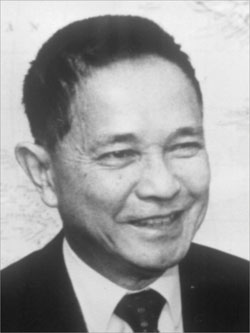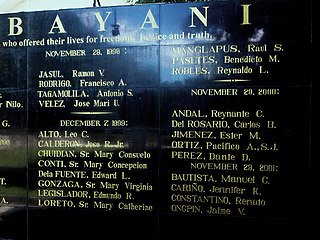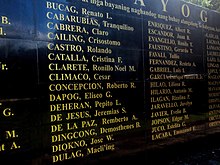
Raul Sevilla Manglapus was a prominent post–World War II Filipino politician and songwriter. He co-founded the reformist Progressive Party of the Philippines and the Christian Democratic Socialist Movement in 1968.

Catalino Ortiz Brocka was a Filipino film director. He is widely regarded as one of the most influential and significant filmmakers in the history of Philippine cinema. He co-founded the organization Concerned Artists of the Philippines (CAP), dedicated to helping artists address issues confronting the country, and the Free the Artist Movement. He was a member of the Coalition for the Restoration of Democracy.

Francisco "Soc" Aldana Rodrigo was a Filipino playwright, lawyer, broadcaster, and a Senator of the Philippines from 1955 to 1967.
Horacio "Boy" Morales, Jr. was a Filipino economist and politician. A prominent figure in the underground left during the martial law rule of President Ferdinand Marcos, he later served as Secretary of Agrarian Reform during the presidency of Joseph Estrada.

The Free Legal Assistance Group (FLAG) is a nationwide organization of human rights lawyers in the Philippines. It was founded in 1974 by Sen. Jose W. Diokno, Lorenzo Tañada, J.B.L. Reyes, and Joker Arroyo during the martial law era under former President Ferdinand Marcos. It is the first and largest group of human rights lawyers established in the nation. They work on countering varied abuses against human rights and civil liberties. Its current chairman since 2003 is human rights attorney Chel Diokno, the founding dean of the De La Salle University Tañada-Diokno School of Law.

The Bantayog ng mga Bayani, sometimes simply referred to as the Bantayog, is a monument, museum, and historical research center in Quezon City, Philippines, which honors the martyrs and heroes of the struggle against the dictatorship of former President Ferdinand Marcos.
Student activism in the Philippines from 1965 to 1972 played a key role in the events which led to Ferdinand Marcos' declaration of Martial Law in 1972, and the Marcos regime's eventual downfall during the events of the People Power Revolution of 1986.

Lourdes "Chit" Panganiban Estella-Simbulan was a Filipino journalist and professor, known for her critical writings on government repression, abuse, corruption and human rights violations.

Benjamín Roberto "Behn" Holcombe Cervantes was a Filipino artist and activist. He was highly regarded as a theater pioneer, teacher, and progressive thinker who was detained multiple times during martial law in the Philippines.

Tullio Favali was an Italian priest who ministered in Zamboanga, North Cotabato and Metro Manila in the Philippines. He was the first foreign missionary to be murdered by paramilitary forces during Martial Law, provoking public outcry from the Vatican and Italian government. His death caused international attention to human rights violations and abuses to paramilitary forces during the Marcos dictatorship.
Antonio Maria "Tony" Onrubia Nieva was a Filipino journalist, union organizer, and activist. He worked to defend press freedom and the rights of workers, and campaigned to end authoritarian rule in the Philippines. He led the National Press Club as president and founded the National Union of Journalists of the Philippines. He was secretary general of the International Organization of Journalists based in Prague, Czech Republic, from 1995 up to the time of his death in 1997. His name is on the Bantayog ng mga Bayani Wall of Remembrance, for his contributions to the fight against injustices of the dictatorship under President Ferdinand E. Marcos.
Religious sector opposition against the dictatorship of President Ferdinand Marcos included leaders and workers belonging to different beliefs and denominations.
The dictatorship of Philippine President Ferdinand E. Marcos in the 1970s and 1980s is historically remembered for its record of human rights abuses, particularly targeting political opponents, student activists, journalists, religious workers, farmers, and others who fought against the Marcos dictatorship. Based on the documentation of Amnesty International, Task Force Detainees of the Philippines, and similar human rights monitoring entities, historians believe that the Marcos dictatorship was marked by 3,257 known extrajudicial killings, 35,000 documented tortures, 77 'disappeared', and 70,000 incarcerations.

During the presidency of Ferdinand Marcos, Filipino workers in the labor industry experienced the effects of government corruption, crony capitalism, and cheap labor for foreign transnational industries, One of the objectives of Martial Law was to cheapen labor costs, in order to attract transnational corporations to export labor to the Philippines. Marcos signed many presidential decrees beneficial only to his associates, while allowing for the forced relocation of indigenous peoples, decreasing workers' wages, and murders of labor activists. Minimum wage was a fixed PHP8.00 per day. Many workers were unemployed or underemployed. It was also during the Marcos presidency when the practice of contractualization began, enabling managements to avoid giving regular, permanent status to employees after six months of work. Strikes were banned and the government controlled trade unions, leaving workers without effective protection against employers who had unfair labor practices and regulations.
Nestor Labastilla Principe, also called "Ka Wadi" was a Filipino activist, writer, and martial arts instructor best known for his student activism at the Lyceum of the Philippines, his community mobilization work among the poor communities of Manila's port ara, and for his martyrdom on May 7, 1973, when he was killed and beheaded by elements of the Philippine Constabulary during Ferdinand Marcos' Martial Law regime.
Rogelio Concepcion Morales was a Filipino master mariner, educator, Navy captain, and activist best known for his role in the transformation of the Nautical School of the Philippines/Philippine Nautical School into the modern-day Philippine Merchant Marine Academy, and for his activism to promote the rights of Filipino seafarers, which led him to become the president of various advocacy societies and unions through the 1950s and 1960s, and to become founder of the Concerned Seamen of the Philippines (CSP) in 1983.

Pacifico Arreza Ortiz was a Filipino Jesuit priest and academic. He is best known as a spiritual adviser of Manuel L. Quezon, for being the first Filipino president of the Ateneo de Manila University, and as a staunch critic of the Martial Law dictatorship of former Philippine President Ferdinand Marcos, especially while he served as the delegate for the province of Rizal to the 1971 Philippine Constitutional Convention.

The Daet massacre, which took place on June 14, 1981, in Daet, Camarines Norte, resulted in four people dying on the spot, with at least 50 others injured when forces of Ferdinand Marcos' administration opened fire on protesters marching to demand an increase in copra prices, and to denounce "fake elections" and the Coco Levy Fund scam. The Daet massacre is particularly noted for happening shortly after Proclamation No. 2045 was issued in January 1981, supposedly lifting Martial Law on the Philippines.

Zorro Campos Aguilar was a Dipolog-based Filipino human rights lawyer, activist, and newspaper editor best known for his work with the Free Legal Assistance Group, and the Zamboanga del Norte chapter of the Coalition for Restoration of Democracy (CORD).
Historians estimate that there were about 70,000 individuals incarcerated by the authoritarian regime of Ferdinand Marcos in the period between his 1972 declaration of Martial Law until he was removed from office by the 1986 People Power Revolution. This included students, opposition politicians, journalists, academics, and religious workers, aside from known activists. Those who were captured were referred to as "political detainees," rather than "political prisoners," with the technical definitions of the former being vague enough that the Marcos administration could continue to hold them in detention without having to be charged.










